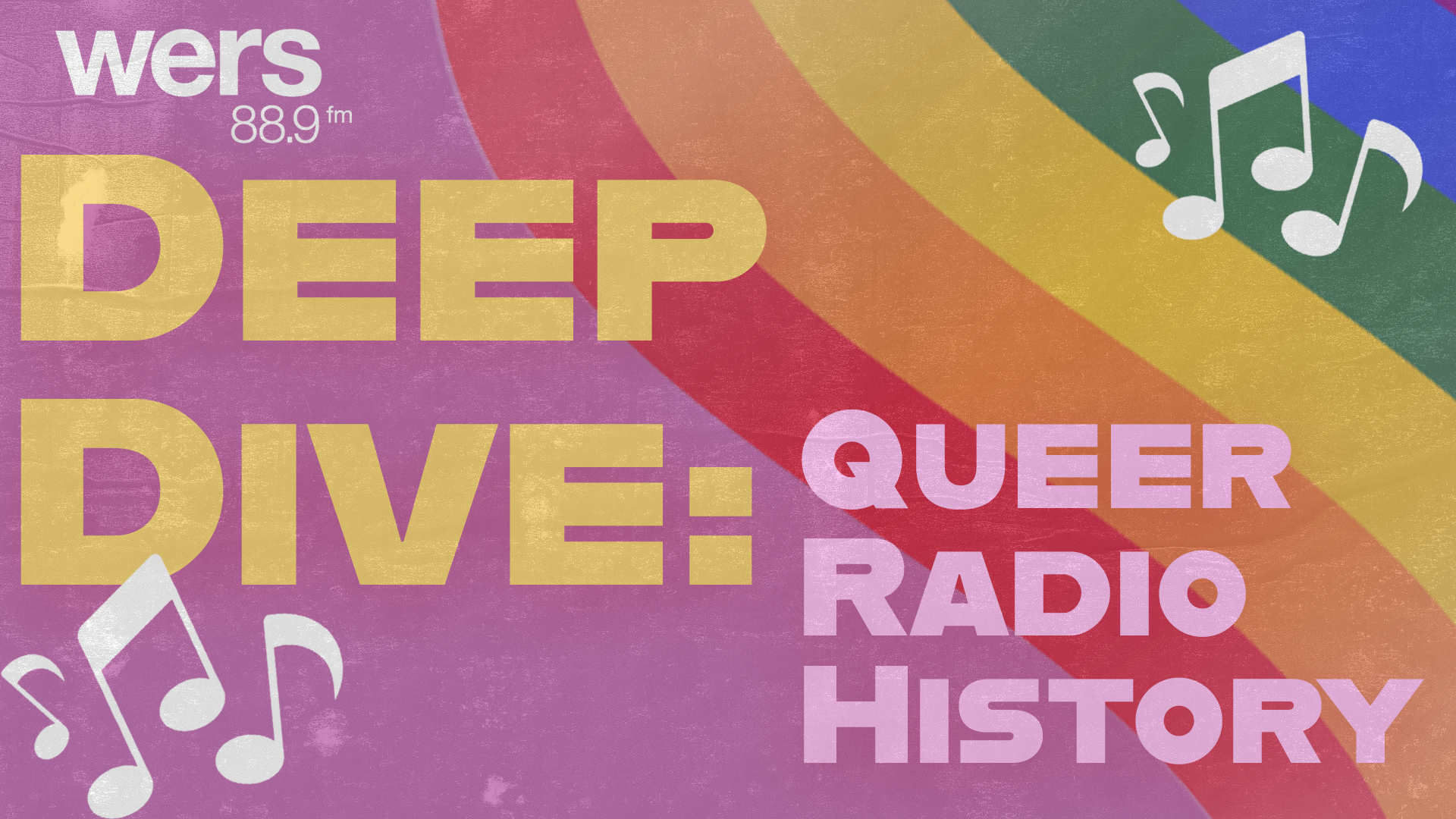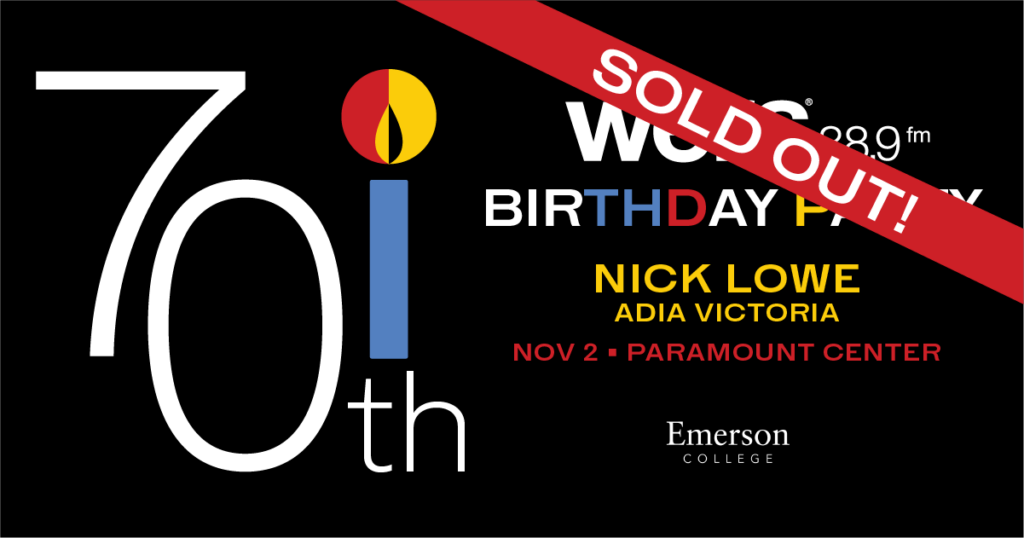
By Nora Onanian, Web Services Coordinator
Through history’s highs and lows, queer radio—though little reported on—has remained pivotal to the advancement of the LGBTQ+ community.
During the AIDS epidemic of the 1980s and 1990s, when stigma towards queer people was rampant, hearing about issues pertinent to the queer community talked about over the airwaves was important not just for signaling acceptance to those who were LGTBQ+ themselves, but also for breaching the gap and opening minds for the rest of the society— those who hadn’t yet considered themselves allies.
Queer radio has been a tool for education in areas ranging from public health and safety to the arts. It has fostered community; helped organize and mobilize LGTBQ+ people in the fight for rights such as marriage equality (one of several eventual victories); and much more.
But before getting to this point, it all started with electromagnetic currents, receptors, and some inventors with vision and gusto…
THE RISE OF QUEER RADIO
Radio’s earliest form as a communication device was in the 1890s. It was Italian inventor Guglielmo Marconi who successfully sent a wireless Morse Code message across a distance of over a kilometer in 1895. Marconi spent the next several years refining his innovation (simultaneously, Nicola Tesla and others had slightly less successful attempts at a similar goal), and by 1911 he was credited for a leap in global communications, and awarded the Nobel Prize.
The 1930s are considered the golden age of radio. The cheapest form of entertainment at the time, its popularity grew rapidly in the ‘20s and ‘30s. By 1934, 60% of U.S. households had a radio. “It was so popular that theaters dared not open until after the extremely popular ‘Amos ‘n Andy’ show was over,” writes Nebraska’s North Platte Public Library.
So, where did queer radio come in?
With queerness being an “alternative” lifestyle, it is no surprise that queer radio had its roots at the same time alternative music did. The underground, punk and indie movements of the 1970s and 1980s inspired people that felt like part of the counterculture to forge their own outlets— whether that take the shape of bands that sang about social issues and angst, or radio shows talking about diverse gender identities and sexualities.
It cannot be without mentioning the influence, too, of the LGBTQ+ rights movement picking up momentum in the summer of 1969, when patrons of a gay bar in New York’s Greenwich Village called Stonewall Inn fought back against New York polices’ routine and repeated attempts to shut down the establishment. The fight for liberation continues today, although many strides have been made since some of these younger seeds of change were planted.
AN EARLY EXAMPLE
One of the earliest well-documented radio stations with programs dedicated to queer issues was KPFT (90.1), Houston’s Pacifica station. A program of theirs that first aired in 1975 was named Wilde ‘n Stein after late 1800s gay playwright Oscar Wilde, and lesbian writer Gertrude Stein.
NPR’s Neda Ulaby chronicles the history of the show, writing: “In one June 1979 episode of Wilde ‘n’ Stein, you can hear prominent activists Larry Bagneris and Charles Law reflecting on their experiences as Black gay men in Houston. Then, an interview with Houston resident Tony Lazada, the former manager of the Stonewall Inn. Lazada was on the scene when the famous Stonewall riots broke out in New York’s Greenwich Village. Ten years later, he was running a Houston gay bar called Dirty Sally’s.”
Wild ‘n Stein ran through the early ‘90s, while KPFT’s late night show for the queer community, After Hours, ran from 1987 until the early 2000s.
It would be of little surprise if KPFT was not the very first pioneer of queer radio. LGBTQ+ history is often cataloged out of passion projects. It was once not deemed important enough to record by the wider majority, despite being filled with vibrant stories, people and places.
A SPOTLIGHT ON LOCAL QUEER RADIO HISTORY: "BOSTON’S OTHER VOICE”
It was a pair of Houston-based archivists — Emily Vinson and Bethany Scott — that helped chronicle KPFT’s queer radio history. The two are working on preserving thousands of hours of similar programming online to be accessible to anyone inclined, whether researchers or the general public.
Similarly, New England-based group The History Project dedicates their efforts towards “documenting, preserving and sharing” local LGBTQ+ history. Out of hundreds of pages on their digital database, radio program Boston’s Other Voice stands out as an exemplary piece of queer radio history.
Boston’s Other Voice was an LGBTQ+ themed radio magazine created in 1981 by Don Latulippe, public affairs programming director at WROR 98.5 FM (sister station to WRKO-AM, both owned by RKO General) and psychotherapist Dennis Iadarolla. Iadarolla hosted the show from 1981-1985, before on-air personality Peter Stickel took over for the show’s last four years, from 1986-1989.
THE INAUGURAL BROADCAST OF BOSTON’S OTHER VOICE
February 8th, 1981, the inaugural episode of Boston’s Other Voice was broadcast. Public affairs director Don Latulippe is whose voice is heard first:
“This is the first program in a new series titled ‘Boston’s Other Voice’ — a program devoted to Boston’s gay community. Your host on these series of programs is Dennis Iadarolla, a psychologist with Mass Bay counseling associates in Newton Corner. Dennis works closely with members of the gay community and their families. And now your host, Dennis Iadarolla.”
Iadarolla continues the introduction:
“Thank you, Don. Boston’s Other Voice is a gay community radio magazine bringing you interviews with interesting people, news, and entertainment, and letters from listeners. From time to time, we’ll be having surprise features. This is a program about people and what it’s like to be gay in Boston.”
The last line speaks especially loudly. Though a simple statement, it was extremely significant that at a time when LGBTQ+ in Boston—and across the U.S.—had their rights, and voices pushed aside, Boston’s Other Voice gave this “othered” group a chance to speak up for what was important to them.
The first episode went on to focus on the Boston group PFLAG—Parents and Friends of Lesbians and Gays—with guests from PFLAG answering questions from Iadarolla.
THE LONGSTANDING IMPACT OF BOSTON'S OTHER VOICE
Boston’s Other Voice went off the air in 1989 when WROR as a whole was sold. The station’s buyers cut the show, partially due to the public affairs program requirement ending during the Reagan administration. In 2008. Peter Stickel donated the recordings of the program to the History Project, recognizing the importance of this time capsule into history. In collaboration with local digitizing process experts Mass Productions, the History Project was able to preserve the legacy of the radio program. It serves as a reminder of this moment in time, and the issues that were relevant—the program sees the rise of AIDS concerns, the Second National March on Washington for Lesbian and Gay Rights in 1987, and plenty more highs, lows and in betweens.
But what could also be considered miniature revolutions are just everyday LGBTQ+ people sharing their stories. In 1986, Stickel interviewed a gay couple who had been together for 31 years, discussing how and why their relationship has lasted. That same year, young lesbians Fred, Emily and Wendy talk about their coming out, lack of support and acceptance from family, and their lives more broadly. The people-focus of Boston’s Other Voice made it what it was. Especially to queer listeners (no matter if they were alive in the ‘80s or born in the 2000s), the important perspectives shared—which had and have been marginalized for so long—feel extremely relevant and impactful today.
A CONTINUING QUEER RADIO LEGACY
It might be hard to point your finger on radio programs dedicated to queer people that continue to broadcast today, but there are certainly ways that queer radio’s legacy lives on.
This Way Out, a radio program that had its inception in 1988, is the only internationally distributed weekly LGBTQ+ radio program currently airing, its website claims. It is heard on close to 200 local community radio stations and non-commercial outlets around the world—free of charge—in addition to being available on their website or on streaming services.
Speaking from a more personal perspective, WERS is a radio station that allows— encourages, even—the voices of LGBTQ+ musicians and employees to make it onto the airwaves or digital space, not to be made Boston’s “other voice,” but simply Boston’s voice.
Albeit more modern, these forms of queerness in radio, importantly signify that the queer community will continue to be loud and proud about forging community, educating, sparking revolutions, and simply being ourselves.


